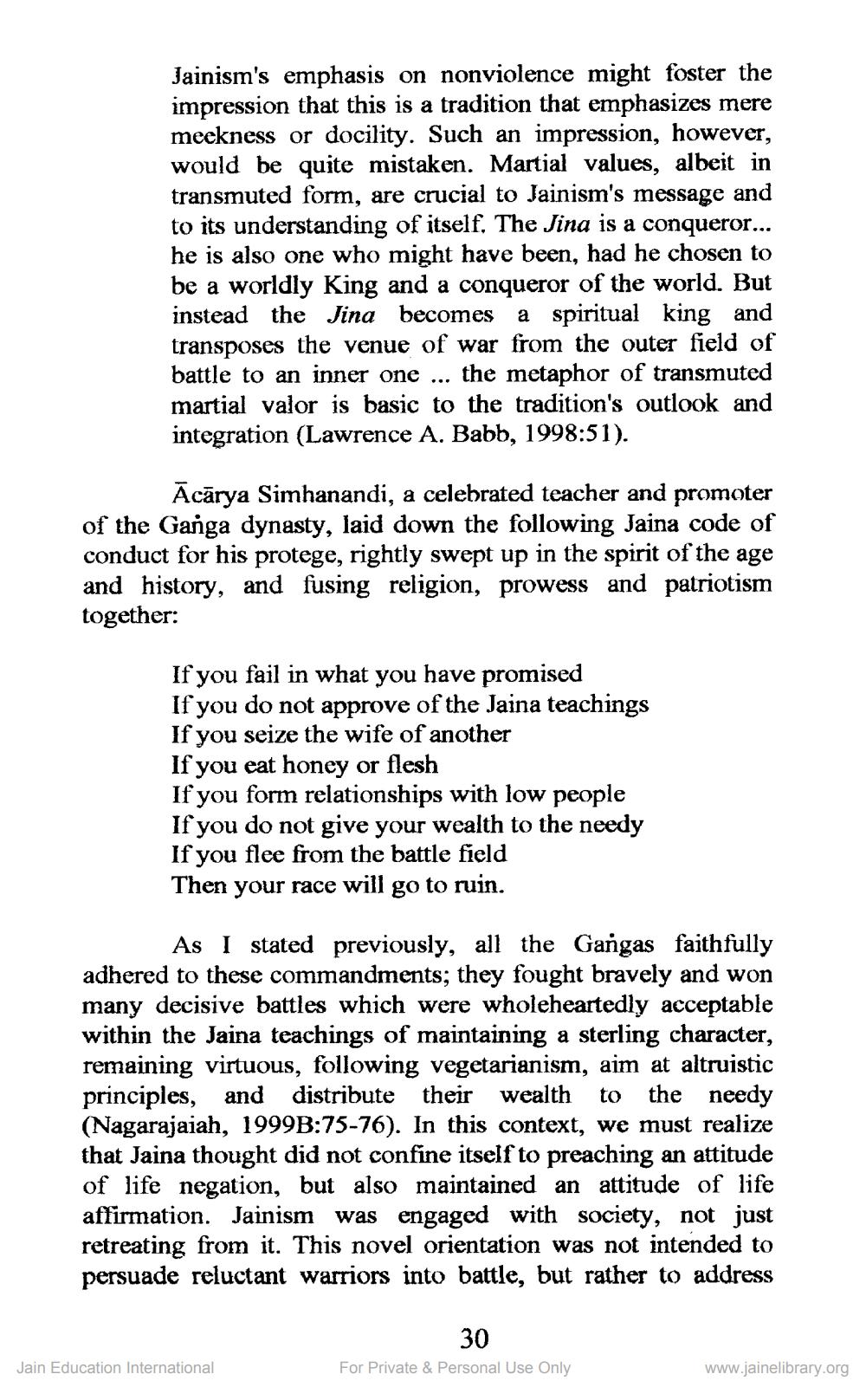________________
Jainism's emphasis on nonviolence might foster the impression that this is a tradition that emphasizes mere meekness or docility. Such an impression, however, would be quite mistaken. Martial values, albeit in transmuted form, are crucial to Jainism's message and to its understanding of itself, The Jina is a conqueror... he is also one who might have been, had he chosen to be a worldly King and a conqueror of the world. But instead the Jina becomes a spiritual king and transposes the venue of war from the outer field of battle to an inner one ... the metaphor of transmuted martial valor is basic to the tradition's outlook and integration (Lawrence A. Babb, 1998:51).
Ācārya Simhanandi, a celebrated teacher and promoter of the Ganga dynasty, laid down the following Jaina code of conduct for his protege, rightly swept up in the spirit of the age and history, and fusing religion, prowess and patriotism together:
If you fail in what you have promised If you do not approve of the Jaina teachings If you seize the wife of another If you eat honey or flesh If you form relationships with low people If you do not give your wealth to the needy If you flee from the battle field Then your race will go to ruin.
As I stated previously, all the Gangas faithfully adhered to these commandments; they fought bravely and won many decisive battles which were wholeheartedly acceptable within the Jaina teachings of maintaining a sterling character, remaining virtuous, following vegetarianism, aim at altruistic principles, and distribute their wealth to the needy (Nagarajaiah, 1999B:75-76). In this context, we must realize that Jaina thought did not confine itself to preaching an attitude of life negation, but also maintained an attitude of life affirmation. Jainism was engaged with society, not just retreating from it. This novel orientation was not intended to persuade reluctant warriors into battle, but rather to address
30
Jain Education International
For Private & Personal Use Only
www.jainelibrary.org




